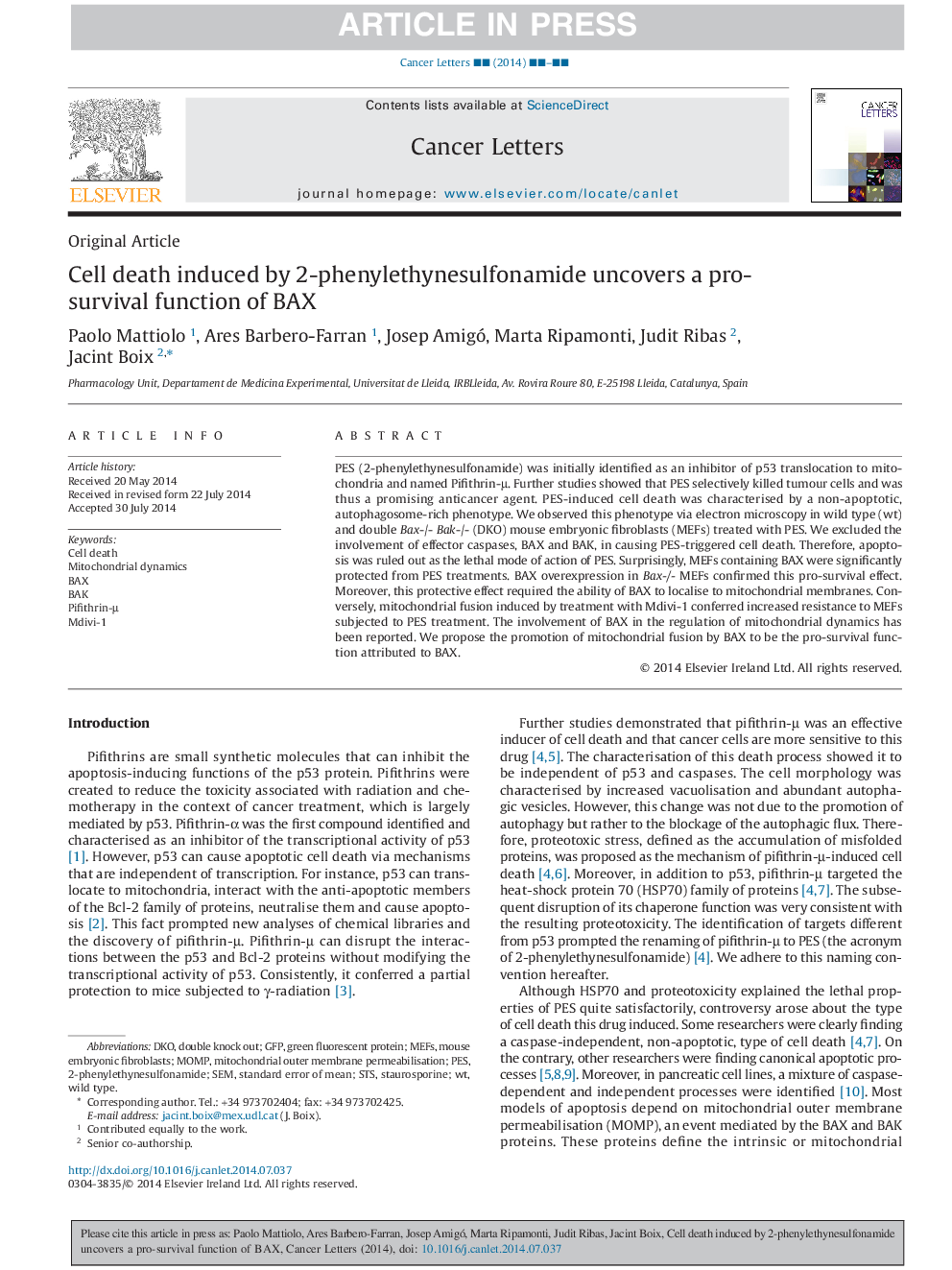| Article ID | Journal | Published Year | Pages | File Type |
|---|---|---|---|---|
| 10902397 | Cancer Letters | 2014 | 7 Pages |
Abstract
PES (2-phenylethynesulfonamide) was initially identified as an inhibitor of p53 translocation to mitochondria and named Pifithrin-µ. Further studies showed that PES selectively killed tumour cells and was thus a promising anticancer agent. PES-induced cell death was characterised by a non-apoptotic, autophagosome-rich phenotype. We observed this phenotype via electron microscopy in wild type (wt) and double Bax-/- Bak-/- (DKO) mouse embryonic fibroblasts (MEFs) treated with PES. We excluded the involvement of effector caspases, BAX and BAK, in causing PES-triggered cell death. Therefore, apoptosis was ruled out as the lethal mode of action of PES. Surprisingly, MEFs containing BAX were significantly protected from PES treatments. BAX overexpression in Bax-/- MEFs confirmed this pro-survival effect. Moreover, this protective effect required the ability of BAX to localise to mitochondrial membranes. Conversely, mitochondrial fusion induced by treatment with Mdivi-1 conferred increased resistance to MEFs subjected to PES treatment. The involvement of BAX in the regulation of mitochondrial dynamics has been reported. We propose the promotion of mitochondrial fusion by BAX to be the pro-survival function attributed to BAX.
Keywords
Related Topics
Life Sciences
Biochemistry, Genetics and Molecular Biology
Cancer Research
Authors
Paolo Mattiolo, Ares Barbero-Farran, Josep Amigó, Marta Ripamonti, Judit Ribas, Jacint Boix,
